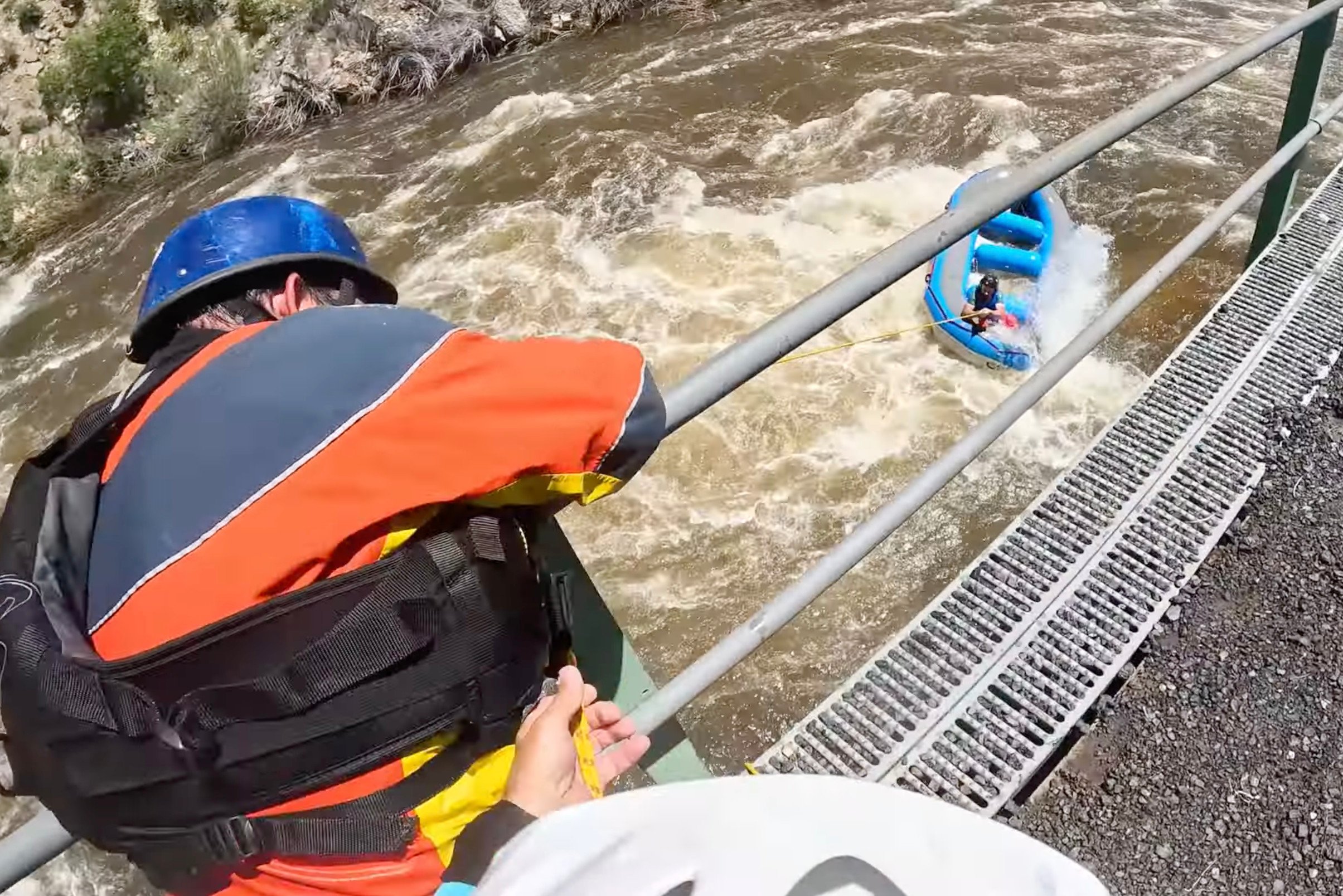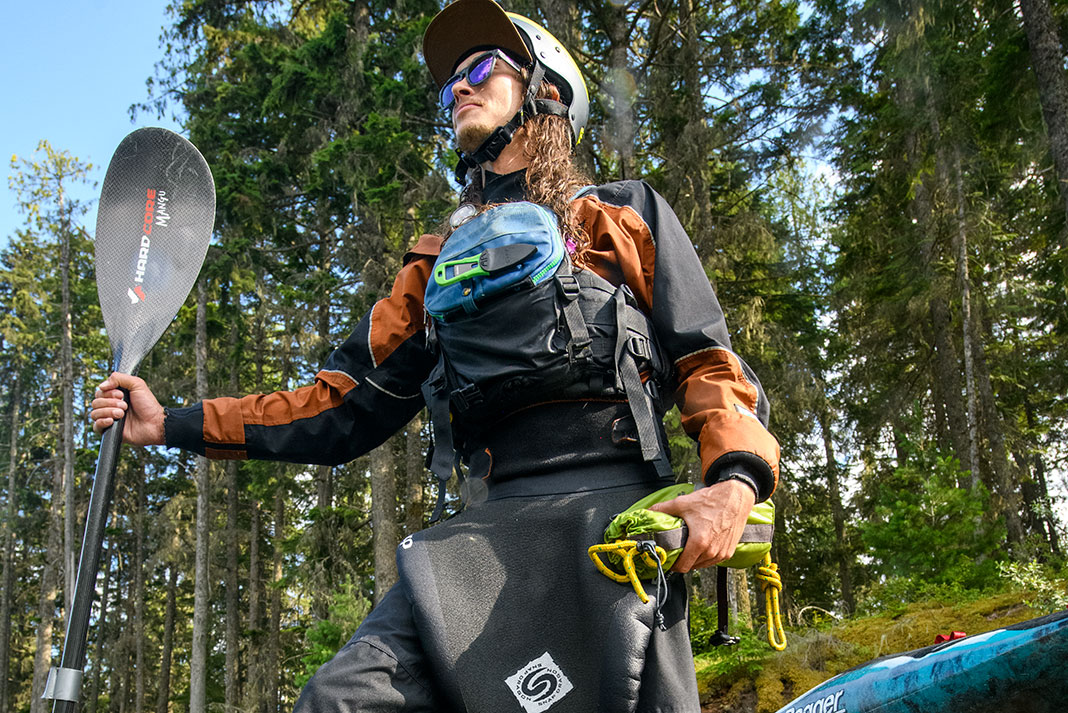Wade Harrison was cruising down the swollen Eagle River in Colorado when he spotted a raft being surfed in a sticky hole at the top of Trestle Rapid. The raft wasn’t unoccupied though. A lone paddler was clinging to the boat. Harrison called out to the rafter, then quickly jumped into action to rescue the man from the hydraulic.
The lower Eagle River is generally considered a class II-III run. But Colorado’s summer snowmelt can easily turn up the dial. An increased water level can change the character of a stretch. At any level, Trestle is one of the most challenging rapids on the Lower Eagle, marked by the low railroad bridge. With higher flows, a vicious hydraulic hides just off the center bridge pillar.
You have to give the stranded paddler credit. While going for the rodeo ride of his life, he is able to clearly articulate his status to Harrison. The man in the raft states he is the least experienced in his group and doesn’t know what to do.

How kayakers rescued rafter from hydraulic
Harrison walks out onto the railroad trestle which does not appear to be in active use. There he joins a kayaker who has thrown a rope down to the raft. They attempt to pull the boat from the hole, but the rafter is unable to hang on to the line. A group congregates on the trestle, including paddlers from the raft.
They throw the rope down to the rafter again. This time, Harrison lowers a carabiner on the line and instructs the rafter to clip the loop at the end of the throw bag to the raft. They walk the line across the bridge, moving the raft laterally toward the corner of the hole.
As the boat comes free, Harrison mentions to the others on the bridge that they will try to use the momentum of the taut line to swing the raft to their side of the river. He also acknowledges they may have to let the raft go to run the rapid. The current begins to pull the raft downstream. Being caught between a rope and an object, or wrapping a rope around your hand or a part of your body is extremely dangerous in a water rescue. Harrison yells to the fellow belayers to let go of the line to avoid anyone being injured. All goes well, and the relieved, and likely exhausted, rafter is soon reunited with hard ground.
Dressing for success on Colorado snowmelt
It’s worth noting the rafters in the video appear to be wearing just shirts and board shorts on the river, which is not the best way to dress for cold water paddling. Although Colorado summer days can be warm, the water temperature of the Eagle River in June fluctuates between just 40 to 50 degrees Fahrenheit. Being submerged in the cold water without a drysuit or wetsuit can easily lead to hypothermia as well as impair your abilities to run a rapid or perform a rescue.




